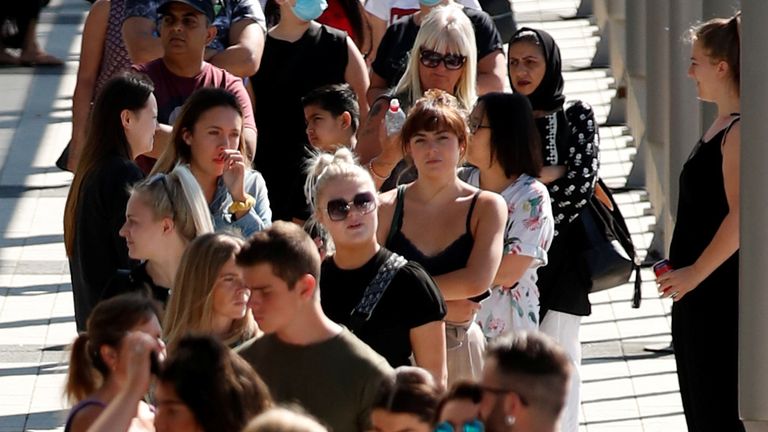At first glance, retail sales figures for June released by the Office for National Statistics reveal the pattern of recovery that business and the Treasury have been praying for – a V-shaped return to pre-coronavirus levels.
The total volume of sales bounced back by a striking 13.9%, just 0.6% down on pre-lockdown levels in February and 1.6% down year-on-year.
That exceeded analysts’ predictions and provided some rare symmetry to the charts.
After months of economic indicators falling off a cliff as a result of the COVID-19 crisis and enforced business shutdown, it comes as some relief.
But the figures behind the headline number reveal only a partial recovery, painting a picture of changing national habits and a population still constrained by public policy and personal choice.
The recovery has been driven by food, fuel and online sales.
This should come as no surprise, as for most of the month there was almost nowhere else to spend money.
Food purchases remain well above pre-lockdown levels, as preparing and eating almost every meal at home moved from a novelty to the norm.
Spending in supermarkets and food stores were up a record 9.9% in March and have stayed high, still up 5.3% in June on the February figure, in part because restaurants and pubs remained closed for the entire month.
This figure may come down in July as a consequence of the reopening, and Chancellor Rishi Sunak will be hoping to see spending on dining and drinking climb in August when his “eat out to help out” voucher scheme kicks in (he may also hope the government’s impending anti-obesity measures are not too successful too soon).
Fuel spending was also up, though still far short of pre-pandemic levels.
Sales rose 21.5% in June indicating a greater willingness to travel, and more reasons to do so with some personal contact restrictions easing.
The total was still 30% down on February, however, endorsing what any regular driver will tell you: the UK is still a long way from pre-COVID congestion and commuting levels.
Online sales, meanwhile, have soared – the dominant retail trend of recent years supercharged by necessity.
“Non-store purchases” now account for £3 out of every £10 spent, up from £2 before the outbreak.
A pound may not sound like much, but it’s close to the difference between a fifth and a third of all spending, a growing habit that consumers may not feel like breaking even as the government urges them to return to work and play over the coming months.
:: Listen to the Daily podcast on Apple Podcasts, Google Podcasts, Spotify, Spreaker
What we have been buying also reflects the restrictions we have been living under.
After months stuck at home, sitting on the sofa staring at the same four walls, many of us have been moved to decorate them.
Some have even been moved to replace the sofa, or at least vacuum behind it.
Paint, hardware, furniture and lighting sales were all back close to pre-lockdown levels, along with household electrical appliances.
Clothing and footwear remained well down, however, reflecting the fact there was nowhere to go.
That may start to change as lockdown easements continue, but only if consumers have the confidence both to go out and to spend once they do.


